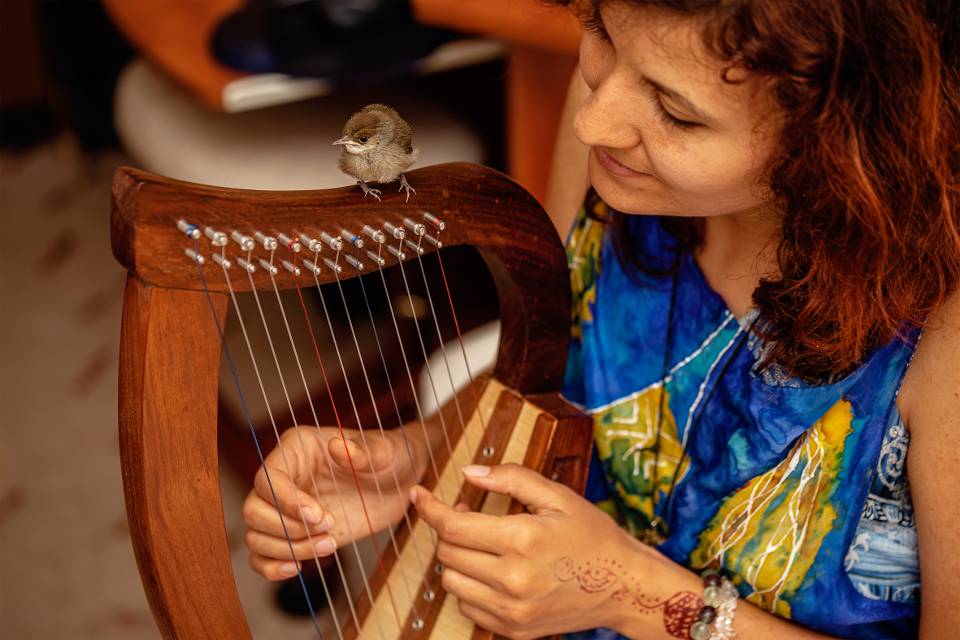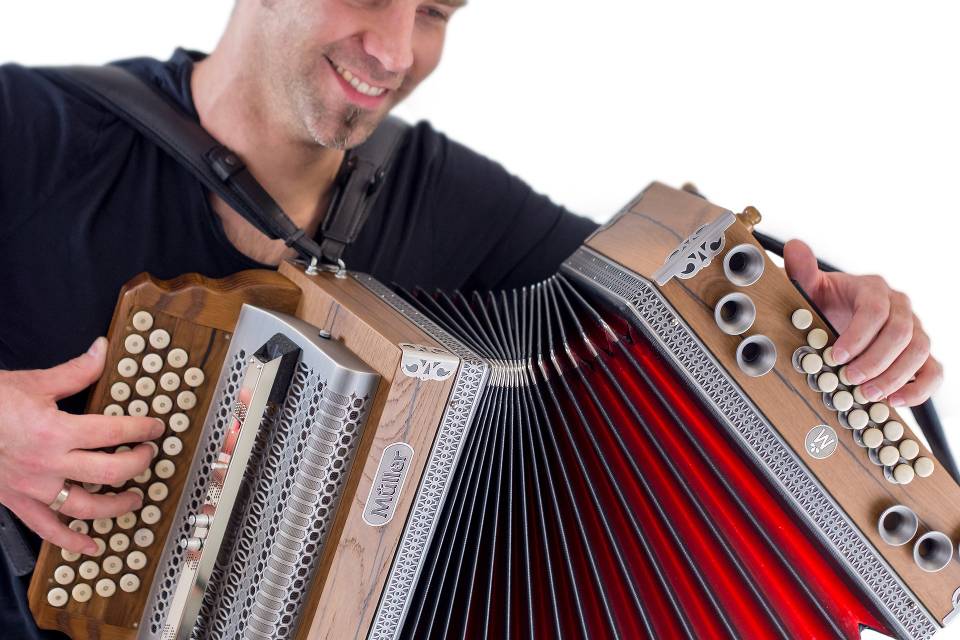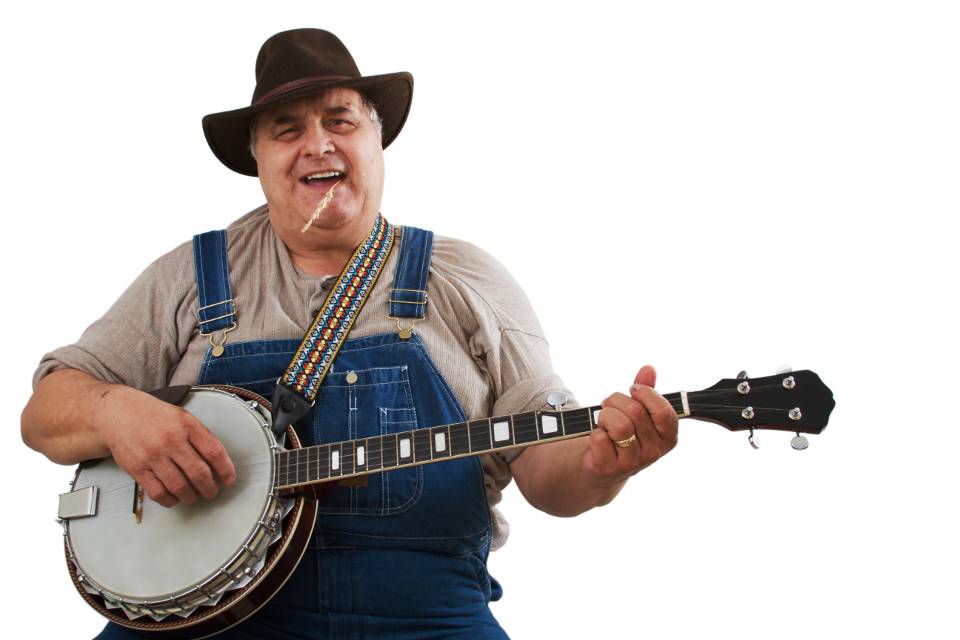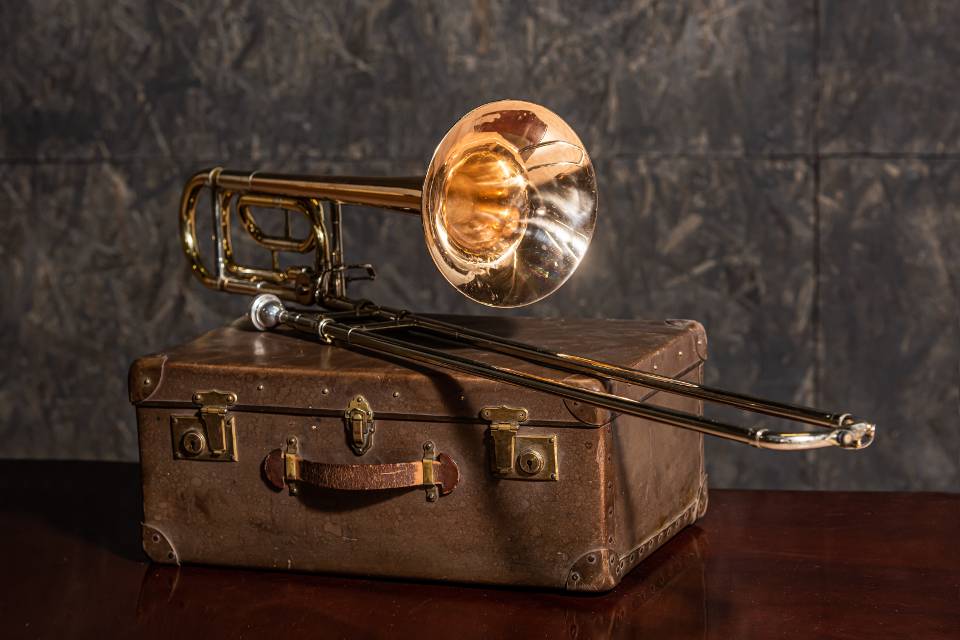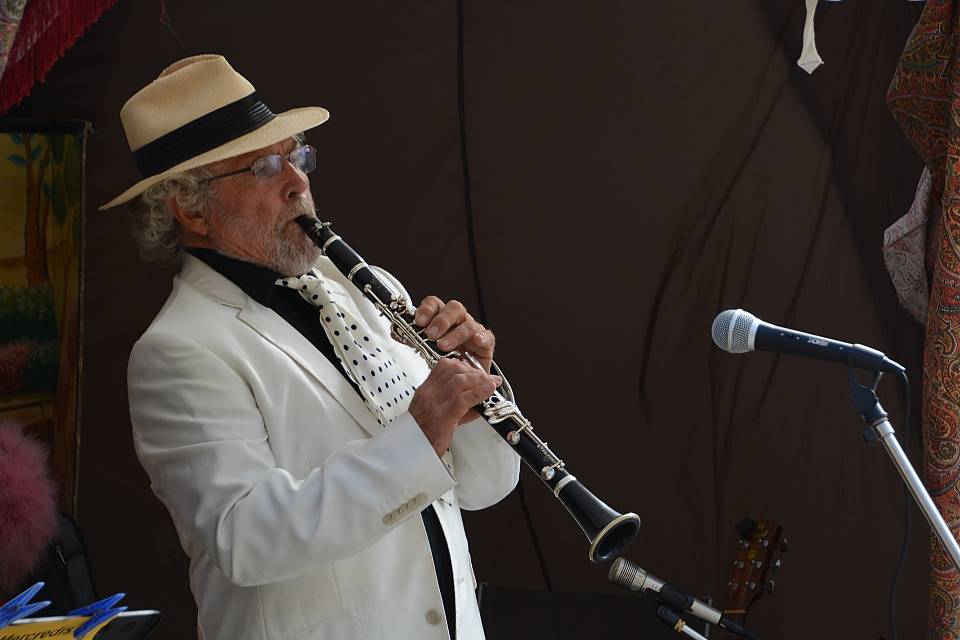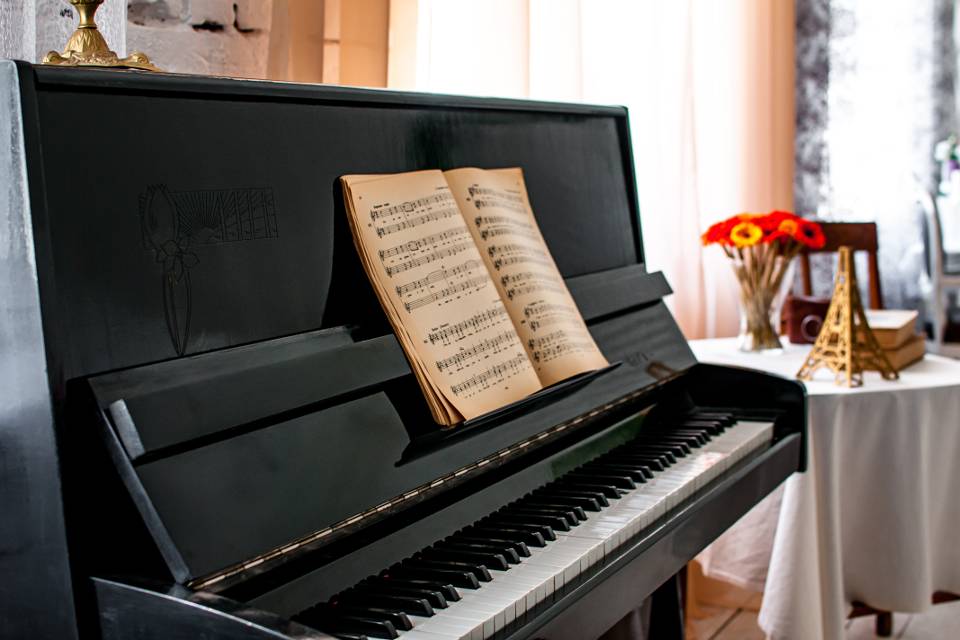
It’s no secret that string family instruments are some of the most popular out there. This goes for both absolute beginners and those who are looking to start playing a second instrument. And, most importantly, they seem to be really appealing to plenty of music lovers these days.
However, string instruments are a very wide category. In fact, they include plenty of different variants, most of which are the result of centuries-long development in many different parts of the world. This is exactly what we’ll be looking into in this brief guide. We’ll explore string instruments, put them into their main categories, and will share some of the most important and popular ones that are available today.
3 Main Types of String Family Instruments According to Playing Techniques
- Plucked string instruments
- Bowed string instruments
- Striking string instruments
Contents
Plucked (or Picked) String Instruments
Guitar
At this point, the guitar is probably the most popular stringed instrument. However, the instrument comes in a lot of forms these days, with the main division being acoustic and electric guitars. Nonetheless, all of them are based on the same principle. There’s the instrument’s body attached to a neck, with strings attached to the bridge on the body on one end, and tuning machines at the end of the neck, a component that’s referred to as the headstock. Of course, there are some other formations where tuners are located on the body and are fused with the bridge, but such guitars are not that widespread.
But all of them rely on the same principle. Strings are plucked, or picked. This can be done using only one’s fingers, or by implementing a plectrum, popularly known as a “guitar pick”. Meanwhile, the neck features a fretboard, which has metal frets on it. By pressing an individual string on a particular fret, the length of the string that vibrates is shortened, thus providing you with a higher pitch. This makes the guitar a good choice for both a leading and backing instrument. Harmonies can also be played “vertically” or “horizontally.”
The guitar, in its many forms, has found its way into pretty much any musical genre today. As for electric guitars, they are now capable of producing many different types of sounds due to the development of different effects units, as well as various types of amplifiers.
Banjo
In its essence, banjo also relies on the same basic principles as the guitar does. You have the body, the neck, you have a headstock at the end of the neck, you have a bridge on the body, and strings are also pressed on the fretboard like on the guitar.
However, there are a few other important distinctions on a banjo. Firstly, the body consists of a frame that has a thin membrane on top of it. The backside is, in almost all cases, completely open and lets the instrument resonate in its unique way.
Modern banjos can either have four or five strings. The one with five strings has a so-called “drone” string. In most cases, the bottom fifth string is the same gauge and tuning as the first string. But in pretty much all cases, the fifth string also only starts from the fifth fret, which is where its tuning machine is located as well. Four-string banjos are more of “traditional” instruments and are not as widespread as five-string ones. But they still rely on the same principles.
Banjo traces its roots in a few different instruments. However, the exact instruments are often part of many discussions. It is generally believed that these instruments all come from the Caribbean. Nonetheless, the development of the modern banjo was significantly helped by African-Americans during the first half of the 19th century.
Bass Guitar
Although often neglected by casual music listeners, the bass guitar is one of the essential instruments for pretty much any modern musical style. However, this is actually one of the youngest instruments. Whether it’s acoustic or electric version, bass guitar as we know it today didn’t actually exist since the 1950s. Sure, the concept was originally developed back in the 1930s by inventor Paul Tutmarc, who essentially created a plucked instrument that had the same tuning and covered the same frequencies as the acoustic double bass, plus it additionally had frets.
But it was Leo Fender who created a regular bass guitar with an electric guitar-like solid body and added conventional pickups to it. This horizontally-held instrument quickly replaced the double bass in all modern music by the time the mid-1950s came.
There were also other attempts at developing bass guitars by Fender at other companies. This involved regular 6-string guitars that were tuned an octave lower. However, their tone never really fit contemporary musical styles and they pretty much remain relics of the past.
Bass guitars are most often plucked by fingers, although it’s also not uncommon to see bass players use different types of plectrums. This depends on the tone that one’s trying to convey, as well as one player’s personal preferences.
Harp
The main thing that makes harps different compared to other plucked instruments on this list is that they don’t have necks. Additionally, each string has its own pitch, they are all placed at an angle to its soundboard, and the only way to change their individual pitch is to use levers or pedals. This makes real professional or semi-professional harps fairly expensive compared to other instruments.
The concept of harps is thousands of years old, although these were very simplified instruments, like lyre.
Mandolin
Just like the guitar, mandolin belongs to the lute family. Mandolins rely on the same principles, as these are string instruments with necks, bodies, and frets. However, what makes them really different is the fact that they come with string courses, which are essentially doubled strings, both tuned to the same note. Mandolins mostly come with 8 strings, with 4 courses of two strings.
Mandolin takes its roots in traditional Western European instruments. These include gittern, lute, and mandola. Among all the styles that developed Neapolitan and Lombardic ones are the most widespread. The Neapolitan one is what we mostly see these days. There are many sub-types of Neapolitan mandolin, but the most common ones are A-style and F-style ones.
Ukulele
Ukuleles resemble mini-sized guitars and bear only four strings, most commonly nylon ones. They take us all the way back to the second half of the 19th century. Ukuleles were developed in Hawaii, where they’re considered to be traditional instruments. However, they were developed from Portuguese guitar-like instruments, commonly known as “machetes.”
These days, ukulele is going through its revival and is becoming increasingly popular. This is mostly due to the instrument’s overall simplicity, making it easy to learn and perform on. There are many types of ukuleles, but the most common one is sporano with the G4, C4, E4, and A4 tuning.
Bowed String Instruments
Violin
Going over to bowed instruments, the violin is probably the most famous one from this group. The word, and thus the instrument concept, dates back to the second half of the 16th century. However, all bowed instruments are direct descendants of the Arabic instrument rebab. This eventually led to the Byzantine Lyra, and eventually the older concepts of the modern violin, which emerged in northern Italy during the 16th century.
Once again, we have an instrument with a body that has a resonant chamber, which is also attached to a neck. The very end of the neck contains a pegbox, which is where the tuning pegs are located. On the body, we have a bridge and a tailpiece with fine tuners. As the body resonates, the sound comes out the “F-shaped” sound holes on the front.
And, most importantly, violins are fretless instruments, just like pretty much all of the bowed instruments. There are some fretted versions, although they’re pretty rare. Electric violins with piezo pickups have also become widespread and are a much more practical solution for some modern bands that have violin players.
Viola
Viola also belongs to the violin family and is almost identical to the violin. However, it’s slightly bigger and comes with a lower pitch, which is why it’s sometimes referred to as the “alto voice” of this family of instruments. All of this also impacts the instrument’s overall timbre, making it sound just a bit “darker” compared to the violin. It’s most often used as an accompanying instrument. But other than that, the instrument is played the same way as a violin.
Cello
Another one from the violin family, the cello features four strings and is tuned exactly one octave below the viola. However, it’s a noticeably larger instrument and it’s played vertically while sitting down and holding the instrument between one’s legs.
The instrument’s name tells us a bit of its origin. “Cello” comes from the Italian word “violoncello” which literally translates to “little violone.” Violone is essentially a large bowed instrument, similar to the double bass, that was prominent during the Renaissance, Baroque, and Classical eras of music.
It’s another example of a fretless instrument. And although usually serving a backing role, the cello can also be a lead instrument as well.
Double Bass (Bass, Contrabass)
Double bass, contrabass, or just bass, is the largest bowed instrument, as well as the lowest-pitched one. And just like the cello, it’s also derived from violones. It comes with four strings and is tuned the same way as the standard bass guitar.
Striking String Instruments
Piano
What many don’t know, or just forget to consider, is that the piano is also a string instrument. However, this is one of the “striking” string instruments, meaning that the sound is produced through hitting the strings. In the case of the piano, there’s a mechanism involving piano keys and hammers inside of the piano that hits the strings. The sound then resonates in the piano’s large body.
Others
Aeolian Harp
Although not exactly an instrument like others on the list, the aeolian harp produces sound using wind. It features a body and a sounding board, along with strings stretched between two bridges. This is also the only instrument that plays only the harmonic frequencies, making it sound really unique.
Hurdy-Gurdy
The Hurdy-gurdy is a medieval instrument that recently got more attention. But although a string instrument, it relies on completely different principles. There’s a hand-cranked rosined wheel that rubs against the strings. Then there’s a keyboard that helps you shorten the length of the strings, change their pitch, and produce melodies. However, hurdy-gurdy also comes with “drone” strings that produce fixed background notes. It’s a traditional folk instrument, but it found some experimental but interesting implementation in modern music as well.
Conclusion
String instruments still keep a very important place in the world of music today. In fact, we’d even argue that they’re at the very top. You’re actually hearing violins, cellos, guitars, and basses way more than you actually think. And in recent years, ukulele has been seeing a significant rise in popularity. If you decide to start playing a string instrument, you won’t regret it – there’s high chance you’ll find a band or orchestra to play in.

